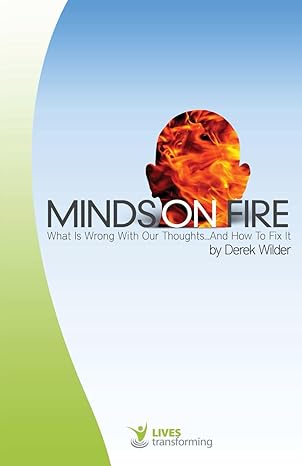The Old Testament establishes a robust messianic expectation that becomes increasingly apparent through a careful biblical-theological analysis. The following essay briefly analyzes the biblical-theological approach and then mentions a few necessary theological presuppositions. Next, the essay moves through each section of the Old Testament from Genesis to Malachi, expounding on how the Old Testament provides a messianic vision. The analysis focuses on relevant thematic initiatives and intertextual connections rather than a summary of disjointed prophecies.
Biblical Theology
Although the essay’s primary focus expounds upon how specific texts within the Old Testament provide a messianic expectation, a brief synopsis regarding the theological approach is relevant. Two overarching approaches to theology exist, which include systematic theology and biblical theology.[1]
The former is a deductive approach that starts with the interpreter’s questions outside of the text and looks for answers within the text. The latter is an inductive approach that looks to the text to provide both answers and questions. Systematic theology leans upon Scripture, tradition, and philosophy to address various doctrinal topics and ultimately attempts to formulate a coherent system. Biblical theology focuses on the text’s historical, literary, and theological contexts while remaining faithful to the unity of Scripture. Accordingly, the concepts of progressive revelation, where thematic initiatives are developed throughout the canon, and intertextuality, where the interconnectedness between Scripture is recognized, become an integral part of the theological approach. The remainder of this essay utilizes biblical theology, which centers on motifs and intertextual threads to show how the Old Testament establishes a messianic expectation.[2]
Presuppositions
Presuppositions provide the groundwork for any interpretive methodology; therefore, establishing a messianic expectation requires a brief assessment of presuppositional alternatives. Anti-supernaturalist approaches, such as those espoused by certain forms of historical criticism, eliminate the possibility of supernatural predictions by the Old Testament prophets; thus making the establishment of messianic expectation impossible. Alternatively, this essay presupposes that a supernatural God can intervene within actual historical events through divine communication with Old Testament prophets to provide a messianic expectation. Finally, the following analysis attempts to emphasize explicit prophecy within the Old Testament texts to identify themes that forge a messianic expectation while recognizing the possibility that the predictions may arguably fall into foreshadowing, typology, or prophetic patterns.
Pentateuch
It seems reasonable to begin the messianic analysis with the book of Genesis. Genesis 3 contains a verse that some have called the “mother prophecy” that birthed the rest of the promises in the Old Testament: “I will put enmity between you and the woman, and between your offspring and her offspring; he shall bruise your head, and you shall bruise his heel” (Gen 3:15, English Standard Version).[3] The language points to a promise that a male descendant of a woman will bruise or crush the head of the serpent; thus, the first biblical-theological motif is a promise of victory from God. God also promises to dwell, or tabernacle, among the people of Shem (Gen 9:27, cf. John 1:14). Genesis 3:15 and 9:27 provide insight into both the humanity and divinity of a God who will eventually dwell on earth in the form of the Incarnate Messiah. Yahweh’s promise to Abraham also connects the biblical motif of the covenant with a messianic expectation when stating, “I will bless those who bless you, and him who dishonors you I will curse, and in you, all the families of the earth shall be blessed” (Gen 12:3). In other words, through a genealogical descendant of Abraham, God will bless all the nations of the earth. Accordingly, the Apostle Paul appropriately ties God’s promise to Abraham to its fulfillment through Christ in Galatians 3:8.
Kingship is another motif that points to a messianic expectation. The prophet, Balaam, under the rule of Balak, the Moabite king, provides the following oracle regarding Israel’s future. Balaam foresees a future where a ruler or king, the Messiah, will emerge and oppose evil powers (Num 24:17). The coming Messiah is also a prophet. In Deuteronomy 18:15, Moses declares: “The Lord your God will raise up for you a prophet like me from among you.” New Testament writers such as the Apostle John also recognized the prophetic nature of the Messiah: “When the people saw the sign that he [Jesus] had done, they said, ‘This is indeed the Prophet who is to come into the world’” (John 6:14). Three biblical-theological motifs emerge within the Pentateuch that point to a messianic expectation: God’s covenant promises, a messianic king, and a messianic prophet.
Davidic Monarchy
Three relevant prophecies occur before David’s reign. The first prophecy occurs at the end of Hannah’s prayer, “The Lord will judge the ends of the earth; he will give strength to his king and exalt the horn of his anointed” (1 Sam 2:10). Hannah’s prayer points to a messianic king motif. The Lord’s judgment likely reflects a “now and not yet” eschatology indicating the power of God during the time of David, the coming of Christ, and the ultimate restoration during Christ’s second coming (cf. Acts 3:24). A messianic priest motif appears again in 1 Samuel 2:35, “And I will raise up for myself a faithful priest…and I will build Him a sure house.” Although the identity of the faithful priest may encompass a collective priesthood, the culmination of the prophecy rests on Christ (cf. 1 Pet 2:9).
Finally, God’s famous promise to David in the books of Samuel establishes the most prominent messianic expectation. Yahweh promises David that from his offspring, the Lord will establish His kingdom and house for all eternity (2 Sam 7:12-13), and Yahweh’s love will never depart from the Son He has raised (2 Sam 7:14-15). Luke recognizes the prophetic reference when noting that Jesus “will be called the Son of the Most High. And the Lord God will give him the throne of his father David . . . forever” (Luke 1:32-33). Nathan’s prophetic message clearly announces a future Messiah that will come as a descendant of David in the flesh to establish the kingdom of God. These prophecies reinforce the three theological motifs in the Pentateuch: God’s covenant promises, a messianic king, and a messianic prophet.
Psalter
The prophetic nature of the Psalter is significant. J. Barton Payne asserts that the Psalter is the “greatest single block of predictive matter concerning the Savior to be found anywhere in the Old Testament.”[4] Accordingly, this essay briefly references various messianic motifs in several Psalms. Psalm 110 references the Messiah sitting at Yahweh’s right hand, ruling Israel’s enemies, and being an everlasting priest (Ps 110:1-4). Psalm 2:6-7 explains that Yahweh will set His King over Zion while referring to the Messiah as His Son. Psalm 110 focuses on a messianic priesthood, and Psalm 2 presents the theme of Sonship, while both Psalms highlight a messianic king motif. Next, the Messiah’s thematic initiative as a symbolic stone shows up in Psalm 118. The author explains that the builders reject the cornerstone of salvation (Ps 118:21-22). New Testament writers also pick up on the language of the Messiah as a stone. For example, Mark 12:10 states, “The stone that the builders rejected has become the cornerstone.”
It would be challenging to ignore Psalm 22:1 when reflecting upon Jesus on the cross, “My God, My God, why have you forsaken me?” Jesus’s words reflect a theme also explored in the book of Isaiah, which offers the motif of a Suffering Servant (cf. Isa 53:3). Psalm 22 also addresses the Messiah’s suffering when describing the scorn and mockery that Jesus faced (Ps 22:6-7). Peter’s quotation of Psalm 16:10 in Acts 2:27 provides some relief to the language of Psalm 22:1 since the author envisioned a Messiah who overcomes His suffering through resurrection. Psalms 68 and 72 support the powerful resurrection message with a triumphant king motif. The Psalmist tells of the Messiah ascending, taking captives, and receiving gifts (Ps 68:18). The Apostle Paul references the triumphant resurrection language of Psalm 68 in his letter to the Ephesians (Eph 4:8). The theme of triumph also appears in Psalm 72:17 where the Messiah endures forever, believers are blessed in Christ, and all the nations are blessed. The final phrase reflects the covenantal motif seen within the Abrahamic covenant. The Psalter reflects several biblical-theological motifs pointing to a messianic expectation. Like the motifs found during the time surrounding the Davidic monarchy, the Psalter reveals a messianic king and priest. Other motifs that point to a messianic expectation include the symbol of a stone, Sonship, a suffering Messiah, and a triumphant Messiah.
Ninth and Eighth-Century Prophets
As expected, the Old Testament prophetic texts have much to say about a messianic expectation and may provide the clearest messianic vision in all of the Old Testament. This essay’s ninth and eighth-century prophets include Hosea, Amos, Micah, and Isaiah. The covenant motif arrives in Hosea 3:4-5 where the Israelites live without a king, but God commits to keep His promises in the last days. Furthermore, a new David will emerge as Israel’s king when Israel seeks God (Hos 3:5). Amos 9:11-15 references the Davidic covenant when Yahweh promises to restore David’s house (Amos 9:11). God also promises to raise a Messiah in the coming days to restore the fortunes of Israel (Amos 9:13-14). Amos is likely pointing to an eschatological reign inaugurated by Christ during New Testament times and the final fulfillment of the promise at Christ’s second advent. Micah also provides words of hope as he explains that God will gather a remnant of Israel as a “flock in its pasture” (Mic 2:12). A leader will arise and break open the way for His flock to pass through (Mic 2:13a). The leader is not only the messianic Good Shepherd (cf. John 10:1-18), but He is also a messianic king (Mic 2:13b).[5]
Although various messianic themes and sub-themes weave through the book of Isaiah, the motifs, according to Walter Kaiser, can be placed within three broad categories: a King, a Servant, and an anointed Conqueror.[6] An example from each thematic category should suffice. First, the wonderful, everlasting, ruling son of Isaiah 9 provides a famous example of the messianic kingship motif (Isa 9:6). In summary, a day will come when people see the light, and a child who will reign on the throne of David will break their oppression (Isa 9:1-7; see also 2 Sam 7:16).[7] The famous passage of Isaiah 52:13-53:12 is an excellent example of the messianic Servant motif. Specifically, Isaiah 53:5-6 speaks of Jesus being pierced and crushed for humanity’s sins and points to the substitutionary nature of Christ’s work on the cross as the Lord “laid on Him the iniquity of us all.” It would be hard to imagine a more faithful and loving Servant of humankind.[8]
Regarding the theme of an anointed Conqueror, Isaiah 61:1-2 describes a scene where the Holy Spirit anoints the Messiah who brings good news, heals the brokenhearted, liberates the captives, and comforts those who mourn.[9] During New Testament times, Jesus announces in a synagogue in Nazareth that He is the fulfillment of Isaiah’s words (Luke 4:16-21). Without question, Isaiah is pointing to an eschatological reality inaugurated in Christ’s first coming that Christ will ultimately fulfill in His second coming. The ninth and eighth-century prophets encompass themes of covenantal promise, the Good Shepherd, a messianic Servant, and an anointed Conqueror. The Old Testament continues adding layers of paint upon a complex portrait that establishes a messianic expectation.
Seventh, Sixth, and Postexilic Prophets
For this essay, the seventh and sixth-century prophets include Jeremiah, Ezekiel, and Daniel, while the postexilic prophets include Zechariah and Malachi. One example from each prophet will highlight the biblical-theological motifs of the Old Testament’s messianic vision. Again, the themes of a new covenant, a messianic kingship, and a messianic priesthood arise, but this time in the book of Jeremiah. Within Jeremiah’s “Book of Comfort” (Jer 30-33), God will raise a new king in the line of David that the people will serve (Jer 30:9), and, like a priest, God will “make Him draw near, and He shall approach Me” (Jer 30:21). Furthermore, the Priest-King will inaugurate a new covenant where God will forgive His people. Yahweh will also write the law on their hearts (Jer 31:31-34).
Reminiscent of Micah, the Good Shepherd messianic motif appears in Ezekiel 34:23-31. Yahweh will rescue His flock, and a servant in the line of David will be their shepherd (Ezek 34:22-23). Furthermore, within the pericope, the themes of messianic royalty (Ezek 34:24), messianic servanthood (Ezek 34:23), and God’s covenant of peace (Ezek 34:25) provide a tapestry of intertextual motifs. Daniel follows suit by highlighting both the anointed conqueror motif and the messianic kinship motif when prophesying that Yahweh will rebuild Jerusalem with the “coming of an anointed one, a prince” (Dan 9:25).
The prophet Zechariah also provides a messianic vision with overtones of a kingship and a priesthood. Zechariah envisions a high priest, also called a servant and a stone, who will be integrally involved in removing “the iniquity of this land” (Zech 3:8-9). Zechariah also announces that a king is coming, who will ironically arrive mounted on a donkey (Zech 9:9; cf. Mark 11:1-10). Finally, Malachi 3:1 reports that a “messenger of the covenant” is coming, which may provide a comprehensive summation of the covenantal thread of the entire Old Testament. In other words, the Messiah embodies all God’s covenants, from the promises beginning in the book of Genesis to the new covenant inaugurated via Christ’s incarnation. Without question, the latter prophets encompass thematic initiatives similar to their predecessors, establishing a robust messianic expectation.
Conclusion
Although certainly not comprehensive, this essay has provided abundant evidence to support that the Old Testament establishes a messianic expectation that becomes increasingly apparent through a careful biblical-theological analysis of the Old Testament. Several thematic initiatives stand out: messianic kingship, messianic priesthood, Yahweh’s covenantal promises, Christ’s inauguration of God’s promises, the Good Shepherd, an anointed Conqueror, and a suffering Servant, to name only a few of the most significant motifs. Furthermore, the motifs provide glue that not only connects various Old Testament intertextual relationships but also provides intertextual relationships between the Old and New Testaments. Without a doubt, the Old Testament establishes a coherent and persuasive messianic expectation fulfilled by and in the Messiah, Christ Jesus.
__________________________________________
[1] For a concise explanation of biblical theology and a brief comparison between systematic theology and biblical theology, see Richard Alan Fuhr and Andreas J. Köstenberger, Inductive Bible Study: Observation, Interpretation, and Application through the Lenses of History, Literature, and Theology (Nashville: B&H Academic, 2016), 340–52.
[2] The essay utilizes categories for Old Testament prophetic corpus patterned after the work of Walter Kaiser. See Walter C. Kaiser Jr., The Messiah in the Old Testament (Grand Rapids: Zondervan Academic, 1995), 5–6.
[3] James E. Smith, What the Bible Teaches About the Promised Messiah (Nashville: Thomas Nelson, 1993), 38.
[4] J. Barton Payne, Encyclopedia of Biblical Prophecy (New York: Harper and Row, 1973), 257.
[5] See similar motifs and messaging in Micah 5:1-4.
[6] Kaiser Jr., The Messiah in the Old Testament, 155.
[7] For similar themes of a messianic King in the book of Isaiah, see Isa 7:10-15; 11:1-16; 14:28-32; 24:21-25; 21:1-8; 33:17-24).
[8] For similar themes of a messianic Servant in the book of Isaiah, see Isa 42:1-4; 49:1-6; 50:4-9).
[9] For similar themes of an anointed messianic Conqueror in the book of Isaiah, see Isa 55:3-5; 63:1-6).
Bibliography
- Fuhr, Richard Alan, and Andreas J. Köstenberger. Inductive Bible Study: Observation, Interpretation, and Application through the Lenses of History, Literature, and Theology. Nashville: B&H Academic, 2016.
- Kaiser Jr., Walter C. The Messiah in the Old Testament. Grand Rapids: Zondervan Academic, 1995.
- Payne, J. Barton. Encyclopedia of Biblical Prophecy. New York: Harper and Row, 1973.
- Smith, James E. What the Bible Teaches About the Promised Messiah. Nashville: Thomas Nelson, 1993.



